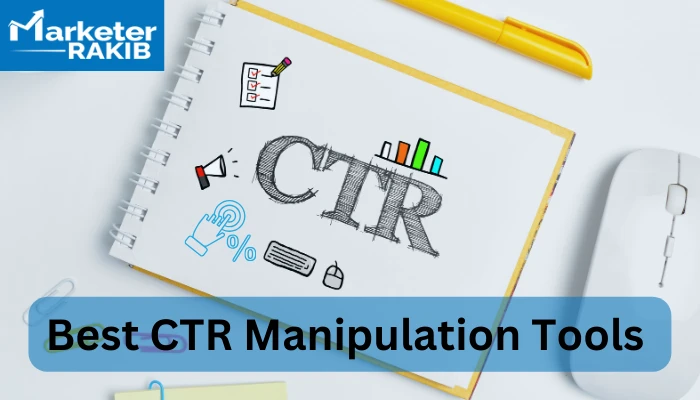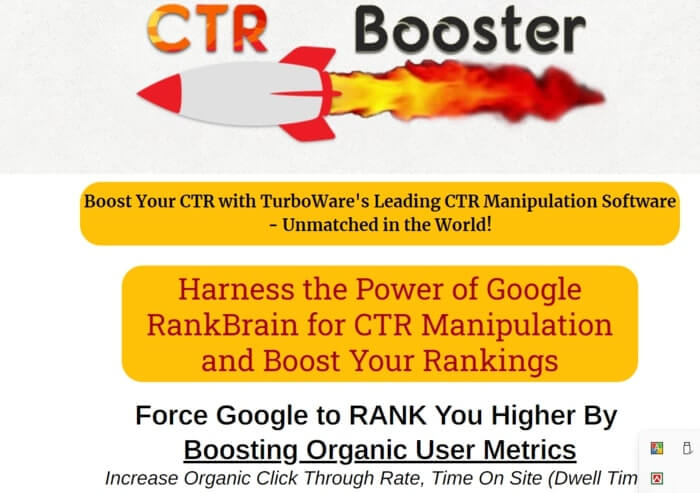Engagement Strategies: The Value of CTR Adjustment
In the realm of digital advertising, understanding and manipulating Click-Through Price (CTR) functions as a cornerstone for efficient involvement approaches. As a key metric that shows how well content resonates with its designated target market, CTR can be affected by different methods, from the crafting of headings to the combination of visuals. Nonetheless, the nuances of CTR adjustment prolong beyond mere numbers; they use the psychology of target market interaction. The exploration of these approaches reveals vital understandings that can reshape your approach to engagement, triggering a reevaluation of your existing techniques. What might these understandings require?
Recognizing Click-Through Rate
Although the idea of click-through price (CTR) may appear simple, it plays a vital duty in assessing the efficiency of electronic advertising and marketing campaigns. CTR is defined as the proportion of customers that click on a specific web link to the number of total customers who view the linked material, usually revealed as a percentage. This statistics works as a vital performance indication (KPI) for evaluating the success of various on-line marketing techniques, including e-mail advertising, social media promotions, and online search engine marketing.
A high CTR suggests that the material reverberates with the target market, triggering them to engage better with the product. On the other hand, a reduced CTR may signify that the content falls short to record passion or supply value. Comprehending CTR is essential for marketers as it overviews the improvement of project techniques, consisting of the optimization of ad copy, visuals, and phones call to activity. Additionally, CTR can influence the overall roi (ROI) of electronic projects, influencing budget plan allocation and resource administration. By very closely evaluating and checking CTR, online marketers can make data-driven decisions that improve customer engagement and drive conversions.
Elements Affecting CTR
A number of elements dramatically affect click-through rate (CTR), shaping exactly how properly material captures audience attention. One essential factor is the relevance of the content to the target audience. When content aligns very closely with users' demands and rate of interests, it normally increases engagement and raises CTR.
An additional essential component is the quality and clarity of the headline or subject line. Compelling headings that stimulate interest or provide clear value propositions can attract users to click. Additionally, the aesthetic appeal of content, consisting of photos and format, plays a crucial function; well-designed visuals can stand out and motivate interaction.
Timing additionally influences CTR; uploading content when the audience is most energetic can result in higher engagement rates. In addition, the placement of links within web content is substantial; strategically positioning calls-to-action can assist customers towards clicking.
Lastly, customer depend on and credibility impact CTR. Content from acquainted brand names or credible resources commonly amasses more clicks, as customers are more probable to involve with content they perceive as trustworthy. By recognizing and leveraging these variables, marketing experts can boost their web content strategies and enhance CTR successfully.
Methods for CTR Adjustment
Effective methods for click-through rate (CTR) control can substantially improve online involvement and drive web traffic. One of the most impactful methods is maximizing titles and headlines.
An additional technique entails the strategic use of meta summaries. A well-written meta description offers a succinct recap of the content while tempting users to click. GMB CTR Manipulation. Using action-oriented language and clear value proposals can improve CTR
Visual elements also play a vital duty. Including captivating photos, infographics, or video clips can draw in customers' interest, making the content much more appealing. In addition, A/B testing different visuals can produce understandings right into what reverberates most with the target audience.
Last but not least, leveraging social proof, such as customer testimonials or endorsements, can develop integrity and encourage clicks. Presenting the popularity of web content or highlighting endorsements fosters depend on and tempts users to engage.
Determining Engagement Effectively
Gauging engagement successfully is crucial for recognizing the impact of CTR manipulation techniques. These metrics aid assess whether the boost in CTR equates to purposeful individual involvement or just reflects superficial clicks.

Additionally, segmentation evaluation can identify which LinkDaddy CTR Manipulation audience demographics are most engaged, making it possible for tailored web content delivery that reverberates with specific groups. Tools like Google Analytics or warm mapping software application can picture customer actions, highlighting areas of interest or friction within the material.
Eventually, a detailed strategy that incorporates quantitative and qualitative information is important for precisely determining interaction. This complex evaluation will certainly notify the ongoing refinement of CTR adjustment strategies, ensuring positioning with user assumptions and enhancing total performance.
Study and Success Stories

In the technology sector, a software application business used A/B screening on their landing web pages, experimenting with different headlines and call-to-action buttons. The enhanced version brought about an outstanding 60% increase in CTR, straight correlating with an increase in trial sign-ups and succeeding registrations.
In a similar way, a non-profit company overhauled their contribution page utilizing psychological narration and engaging visuals. By purposefully adjusting their content and design, they accomplished a 35% greater CTR, equating to a significant increase in donations.
These instance research studies illustrate just how careful techniques surrounding CTR manipulation can improve customer interaction, ultimately driving conversion rates. By understanding target market preferences and leveraging information analytics, organizations throughout different sectors can understand considerable renovations in their interaction metrics, showcasing the extensive effect of thoughtful electronic marketing techniques.

Final Thought
In verdict, efficient engagement strategies are greatly reliant on the adjustment of Click-Through Rate (CTR) as a critical statistics for content success. By employing strategies such as enhanced headings, engaging visuals, and A/B testing, marketing professionals get more can dramatically improve CTR and, as a result, audience interaction.
CTR is defined as the proportion of users who click on a details web link to the number of total individuals who check out the associated material, typically revealed as a percentage.A number of aspects dramatically influence click-through price (CTR), forming exactly how effectively content captures target market attention. When content aligns very closely with users' requirements and passions, it naturally enhances interaction and boosts CTR.
By recognizing and leveraging these aspects, marketing professionals can enhance their content techniques and enhance CTR effectively.
In final thought, effective engagement methods are greatly dependent on the adjustment of Click-Through Price (CTR) as a crucial metric for material success.